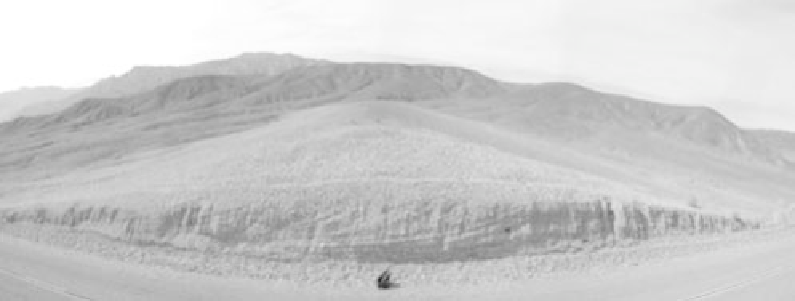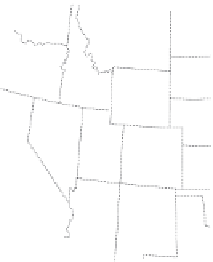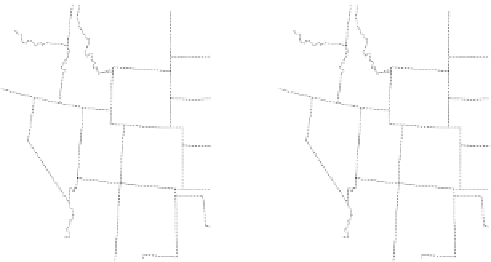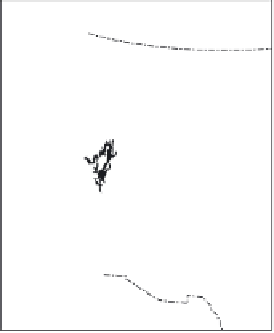Geoscience Reference
In-Depth Information
(b)
Case Fig. 5.2C (Continued)
Late Pleistocene - Early Holocene conditions
18 ka (Last Glacial Maximum)
14 -11 ka
11-8 ka
0
500
km
H
H
Strong zonal
circulation
Cold dry
Jetstream
shifts north.
Winter rain
in Northern
Sierras
Easterlies
Cool wet
Lake Lahontan
(max)
Lake Lahontan
(falling)
Lake Lahontan
(rel. high)
Jetstream
to the South.
Rain and
snow to the
Sierras,
Transverse
Ranges, etc.
Cool moist
Cool moist
Lake Mojave
(high)
L
Winter
precipitaion
Convectional
(summer)
rainfall
Low pressure
centres
Jetstream well
to the South.
Rain and snow in
Western Sierras,
Transverse Ranges,
etc. Great Basin,
cold and dry.
Lake Mojave
(high)
Lake Mojave
(falling)
Glacial ice
(approximate)
Zones of heavy
precipitation
High pressure
Meridional flow
allows summer
monsoonal penetration
of tropical air in the
southwest (but rarely
into the Great Basin)
Zones of
heavy (winter)
precipitation
L
H
Case Fig. 5.2D
Postulated Late Pleistocene to Holocene changes in airmass circulation. (From Harvey et al. 1999.)
distal alluvial fan sedimentation and progradation. Combining this information on vegetation
cover with climate reconstructions (Case Fig. 5.2D) highlights the interaction between these
two variables and their impact on sediment production and delivery. In the Late Pleistocene both
Lahontan and Mojave were subjected to much wetter and cooler climates than today. Winter
precipitation was dominant and heavy snowfall in the Sierras and the Transverse ranges main-
tained the pluvial lake levels. During the Late Pleistocene to Holocene transition the weakening
of zonal circulation and the monsoonal incursion of warm moist tropical air from the Gulf of
Mexico or eastern Pacific affected the Lake Mojave catchment. This meant that summer storms
became more effective in this region. The Lahontan area was not affected by these storms. In
terms of the vegetation cover, research using the distribution of remains from packrat middens
demonstrates that catchment hillslopes in the Mojave supported a desert shrub vegetation. In
contrast the Lahontan supported juniper woodland and grasses at low elevations and pine at































































